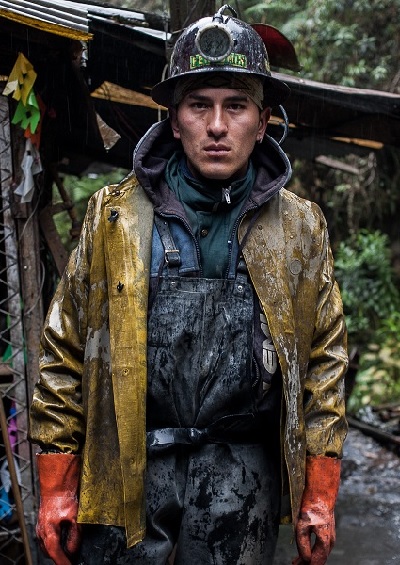Paris Climate Talks Need to Focus on Innovation
Only when the unsubsidized cost of clean energy is cheaper than fossil fuels will nations switch en masse.
November 30, 2015
As representatives of nearly 200 countries convene in Paris, many are hailing COP 21 as an historic “turning point” in global climate change policy. Expectations are high that nations will finally commit to significant cuts in greenhouse emissions.
Christiana Figueres, Executive Secretary of the United Nations Framework Convention on Climate Change, sums up the view: “We have most of the technology that we need. We have the capital. We’re moving on the policy.”
But in reality, we have none of the three. And without the first, technology, we won’t get the other two.
The reason is simple: Few nations want to bear the costs of committing to aggressive, binding greenhouse gas reduction targets, since it would mean higher energy prices and reduced competitiveness.
The reality is that, outside of niche markets, clean energy is still more costly than fossil fuels. According to the International Energy Agency (IEA), “Promising renewable energy technologies… still face technology and cost challenges.”
A recent study by the U.S. Department of Energy and the Electric Power Research Institute calculates that costs of renewable energy storage systems needed to deal with the intermittency of wind and solar are more than $200 per megawatt hour—three times more expensive than electricity from natural gas.
In other words, while solar and wind energy prices have fallen, they still depend on government subsidies. And storing this intermittent power for later use remains way too costly.
Costly affair
As things stand, clean energy remains a higher-priced, luxury good. That is why, given current technology, transitioning by 2030 to a world that is fully supported by renewable energy will cost as much as $100 trillion, or 8% of global GDP per year for the next 20 years.
These high costs are why many nations, such as Spain, Germany and more recently the United Kingdom, are having buyers’ remorse.
They are dramatically cutting back on the expensive subsidies needed to make renewable energy price competitive.
This means that even if nations make commitments in Paris to reduce their carbon emissions, there is a very good chance they won’t be able to meet their pledges.
As advocates discovered during the first Kyoto Protocol, setting a target is far different from taking the difficult political steps to actually meet it.
As long as clean energy costs more than dirty energy, most countries will simply set less ambitious goals, change the goals when new governments come to power, or ignore the goals outright when it comes time to raise energy prices on consumers who vote.
Not even a nation as wealthy as the United States is remotely interested in shouldering the necessary burdens, despite overwhelming evidence of the threat that global warming poses.
Largely owing to the economic emergence of Asia, global carbon emissions have grown faster since 2000 (2.2% per year) than they did between 1970 and 2000 (1.7% per year), and they show no signs of stabilizing, much less dropping.
There is really only one way for nations to switch en masse to clean energy, and that is to make its unsubsidized cost cheaper than fossil fuels.
The only way for that to happen is through substantial technological progress across a range of clean energy technologies, like third-generation solar photovoltaics, wind, nuclear fusion, batteries and others.
How can the switch happen?
Contrary to the hopes of some, achieving the kinds of sustained, long-term, “Moore’s Law”-type price declines that we need to make clean energy widespread and competitive is not likely to come from just expanding their market sizes.
It is useful to remember in that context that computer chip speeds did not grow exponentially as a result of, say, larger chip markets.
What is thus needed is significantly more investment in research, development and demonstration (RD&D) of new technologies. It will be in laboratories that climate change is solved.
But global investment in clean energy RD&D amounts to only 13% of what the world spends on fossil fuel subsidies and 27% of what it invests in subsidizing existing high-cost clean energy.
Indeed, the IEA calculates that the global public investment gap in clean energy RD&D is as great as $70 billion per year. In other words, investment needs to increase by three to four times to solve critical technological challenges and lower costs.
As such, if the Paris negotiations are going to do more than just produce feel-good, non-binding commitments, negotiators need to focus on how such an agreement can advance a global clean energy innovation strategy.
This means that instead of being presented with a “take it or leave it” option of signing on to an international agreement to limit carbon emissions, countries should also have the option to participate by committing to investing at least 0.15% of their respective GDPs in clean energy research, development and demonstration.
Investing in clean energy
Doing so would boost investment in clean energy innovation to $100 billion per year. This represents an Apollo-like investment on a global scale that could quickly advance technology development in areas such as energy storage, solar, wind and nuclear power.
And it could give countries that for political reasons may not be able to sign on to a target, like the United States and China, another (more effective) option for engaging in international climate policy.
For countries fearful that carbon targets would put them at an economic disadvantage, RD&D targets provide an alternative to spur innovation, offering the potential for economic growth.
Climate advocates may argue that investing in clean energy innovation is uncertain, compared to the apparent certainty of carbon targets. In fact, the opposite is true. Carbon targets are wishful thinking at best, because there is little certainty countries will set a target and magically cut carbon under current technological circumstances.
Investing in clean energy R&D is likely to directly lower clean energy costs and thereby directly remove the biggest barrier to its wide-scale adoption.
In short, we don’t just need carbon targets to save the planet; we need clean energy innovation and research and development targets to save it.
Takeaways
Optimists say: “We have most of the technology and the capital. We're moving on the policy.”
Without technology, we will neither have capital nor policy consensus to combat climate change.
Outside of niche markets, clean energy is still more costly than fossil fuels.
Nations can't make carbon reductions promised in Paris without the technology to do so.
Global carbon emissions have grown faster since 2000 than they did between 1970 and 2000.


